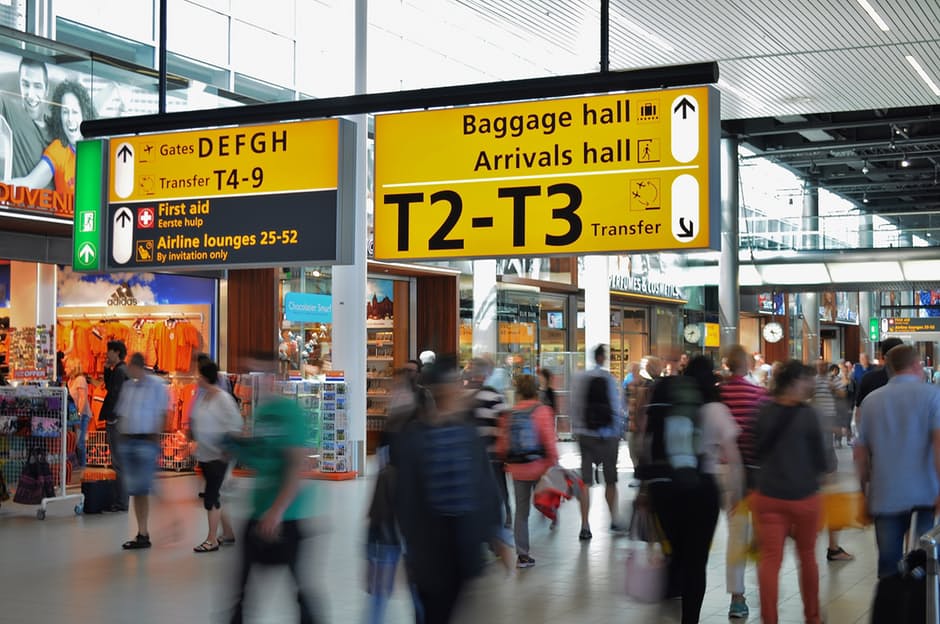Let’s try this again.
That’s essentially what the White House said Monday with the announcement of its revised executive order banning travel from a half-dozen Muslim-majority nations.
The new directive, which Trump signed on Monday morning, prohibits for 90 days people from Iran, Somalia, Sudan, Yemen, Syria and Libya from receiving new visas to enter the United States and suspends the country’s refugee resettlement program for 120 days.
Absent within the revised mandate is Iraq as one of the nations from where travel to the United States is blocked, the exclusion of religious minorities, and the banning of Syrian refugees specifically from entering the country. Unlike the original version, green card holders will not be impacted.
The revamped executive order will go into effect March 16.
The move comes nearly a month since a federal appeals court in San Francisco declined to reinstate Trump’s original immigration ban, which had been temporarily frozen by a lower court in Washington State. That ruling emboldened protestors, who had hit the streets and the nation’s airports for near-daily protests against the ban, criticizing it as unconstitutional and blatantly un-American.
Administration officials who spoke to several media outlets prior to Trump signing the revised order insisted that the measure is not a “Muslim Ban,” but rather, meant to keep America’s borders safe.
Those opposed were quick to dismiss it as discriminatory.
“While the White House may have made changes to the ban, the intent to discriminate against Muslims remains clear,” New York Attorney General Eric Schneiderman said. “This doesn’t just harm the families caught in the chaos of President Trump’s draconian policies—it’s diametrically opposed to our values, and makes us less safe.”
“My office is closely reviewing the new executive order, and I stand ready to litigate,” said Schneiderman, whose office last month joined lawsuits challenging the original immigration ban.
Following a barrage of criticism arguing the original ban was ambiguous and hastily written, the administration appeared intent to avoid a repeat of the chaotic first few hours after the original ban was implemented, when some travelers, including green card holders, were detained and subsequently deported. In some cases, travelers were aboard U.S.-bound planes when that order was announced. Adding to that confusion were customers and border agents working off of sweeping orders that did not clearly indicate whether people with proper immigration documents were allowed entry into the country.
Thousands of protesters had descended on terminals to lend support to detained travelers in opposition to Trump’s ban. Lawyers also responded to the call, turning waiting areas into mobile offices.
The scenes that played out across the country signaled a deep rift in U.S. politics, with top politicians joining protestors in demonstrations and openly criticizing the travel mandates. While new policies were being put in place in the name of protecting America’s borders, opponents contended that the country’s doors should remain open.
If what was playing out inside terminals and outside airport gates wasn’t surreal enough, hundreds flocked to a federal court in Brooklyn where lawyers for the government and American Civil Liberties Union were debating the merits of the law. The court responded by ordering an emergency stay on deportations—the first indication that the order was vulnerable to scrutiny from the courts. When one of the attorneys emerged to tell the hundreds gathered outside what had happened, they exploded in exuberant cheer.
The most damning blow to Trump’s original travel ban came on Feb. 9, when three appellate judges in San Francisco decided against reinstating it after a separate court in Washington ordered it halted.
The government sought to have the challenge from the states of Washington and Minnesota thrown out, arguing that the president has such broad authority over America’s borders that they’re “unreviewable” by courts.
“There is no precedent to support this claimed unreviewability, which runs contrary to the fundamental structure of our constitutional democracy,” the court ruled.
The White House has all but decided against continuing the court challenge from a month ago, instead issuing this latest order that in theory would not be as easily rebuked by the courts. Trump defended its implementation, arguing that any delays would allow people with ill intentions to enter the United States. This time around, the White House was more deliberate in signing off on its restrictions.
There had been reports that Trump was going to sign the executive order last week, but following his Feb. 28 address to Congress, the White House reportedly decided instead to delay its announcement to avoid overshadowing his speech’s generally favorable response.
Trump’s “Muslim Ban,” as human rights and civil liberties groups have dubbed it, first emerged during his campaign for the White House, and originally encompassed the complete ban of all non-U.S. Muslims entering the country. The controversial proposal drew heavy criticism, but Trump remained steadfast. He later softened his language, instead referring to his plan as “extreme vetting.”





























